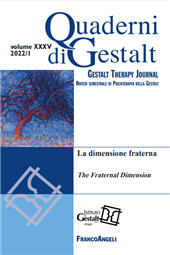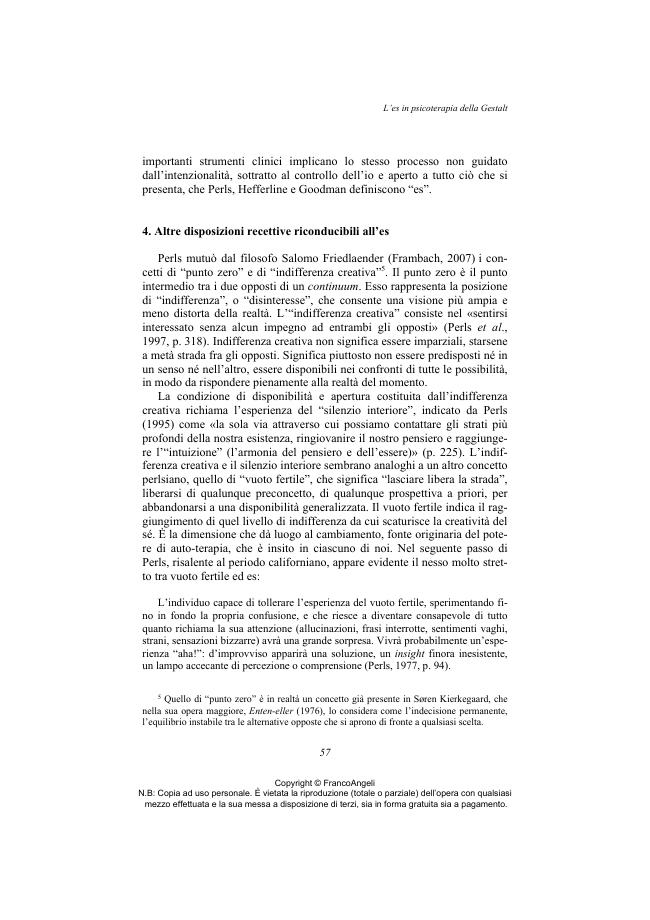L'es in psicoterapia della Gestalt
P. 47-67
Scopo di questo articolo è dimostrare come l'es rappresenti un importante fondamento teorico dell'attuale psicoterapia della Gestalt, orientata alla relazione. Gli autori di Gestalt Therapy ridefiniscono il concetto psicoanalitico di es in un'ottica fenomenologica, considerandolo sia come la fase iniziale del processo di contatto, sia come un particolare modo del processo stesso. Inteso in quest'ultima accezione, l'es è il funzionamento del sé nel rilassamento e nella non integrazione. Nel lavoro clinico centrato sull'individuo, il funzionamento es del sé è alla base del continuum di consapevolezza. In un'ottica orientata invece alla relazione, il funzionamento es costituisce per il terapeuta uno strumento di conoscenza del campo. Il funzionamento es, inoltre, favorisce una condivisione intima tra paziente e terapeuta, che somiglia a una forma di meditazione a due e rappresenta un'apertura della psicoterapia alla dimensione spirituale. [Testo dell'editore]
The purpose of this article is to demonstrate how the id represents an important theoretical foundation of current relationship-oriented Gestalt therapy. In the founding text of Gestalt therapy, Perls, Hefferline and Goodman redefine the psychoanalytic concept of id from a phenomenological point of view, considering it both as the initial phase of the contact process and as a particular mode of the process itself. Intended in the latter sense, for the authors of Gestalt Therapy, the id is the non-integrated mode of the self, the non-rational yet sensed way of being that manifests itself in relaxation when the rational control of the ego is not present. In individual-centered clinical work, the id functioning of self is the basis of the continuum of awareness, which is the classic Gestalt technique that represents the alternative to the free associations of psychoanalysis.
From a relationship-oriented perspective, the id functioning allows the therapist to know what is happening in the field through the current of sensations and impressions co-created at the contact boundary. Thanks to his own aesthetic sensitivity, the therapist captures those aspects of the situation that are not normally perceived because they can be grasped through the senses rather than through the intellect. Finally, the id promotes deep communication between patient and therapist that is an important therapeutic factor. When patient and therapist accept the risk of coming out of the safety of their own ego and abandon themselves to the non-integrated functioning of the self, an intimate sharing takes place between them, which is very similar to a form of meditation for two. In this way, the id implies an opening to the spiritual dimension and provides a new horizon to clinical work. [Publisher's text]
-
Artikel aus derselben Ausgabe (einzeln erhältlich)
-
Informationen
ISSN: 2035-6994
KEYWORDS
- es, rilassamento, non integrazione, flusso di consapevolezza, condivisione intima
- id, relaxation, non-integration, flow of awareness, intimate sharing



